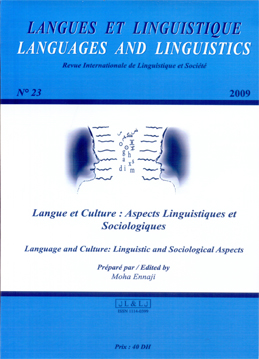Edited by : Moha Ennaji
2009 / Issue 23

Moha Ennaji
Introduction
Rdouan Faizi
An Acoustic Study of Stress in Amazigh
Zohreh Shooshtari & Shahid Chamran
The Acquisition of Simple Questions in Persian
Fatma Zohra Mebtouche Nedjai
Algerian Women’s Attitudes Toward Taboo Words: a Sociolinguistic Survey
Khadija Sekkal
Fortune Telling: A Gender-based Occupation in Sous